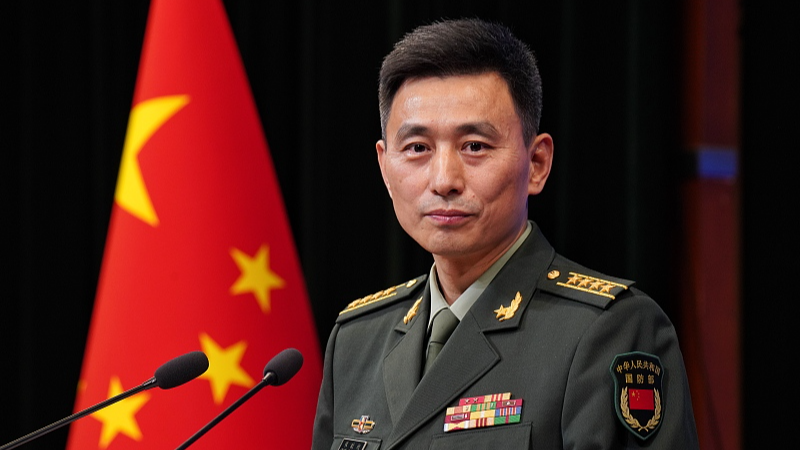Latest on US Tariffs; US-Iran; US-European Defense; Gold and Oil Prices; China Advances in 6G

U.S.-Iran Negotiations: A New Pathway or Just the Beginning?
The recent talks between the United States and Iran in Oman signify a critical point in U.S.-Iran relations. According to United Daily News, key issues discussed were the de-escalation of Middle Eastern tensions and limitations on Iran's nuclear program. The negotiations, though termed as indirect, with communication via Omani intermediaries, represent a strategic move by both nations towards potential detente. The Biden administration's insistence on Iran fully abandoning its nuclear ambitions suggests the U.S.'s red line is clear, as echoed by the rhetoric from U.S. Secretary of State Antony Blinken. Meanwhile, Iranian officials expressed a willingness for genuine negotiations, provided that the U.S. demonstrates goodwill.
This delicate diplomacy hints at broader implications for global nuclear non-proliferation efforts. While America’s firmness may maintain international pressure on Iran, the indirect nature of the talks and the delicate balancing act with allies could lead to complexity in cementing any definitive agreements. The talks might initiate a thaw in U.S.-Iran relations, but real progress depends on both nations' ability to bridge significant historical and political divides.
U.S. Trade Policies: Tariff Rethink
The U.S. government's decision to exempt certain electronic products from the "retaliatory tariffs" exemplifies evolving trade strategies, as reported by The Paper. This shift seems designed to mitigate inflationary pressures on American consumers while also benefiting tech giants like Apple and Samsung. Such policy reversals signal flexibility in U.S. economic strategies amid shifting global trade dynamics.
Financial markets may view this as a stabilizing move in the tech sector. However, it could also suggest underlying stress in balancing trade relations globally. Observers note that this could embolden other nations to reassess their trade policies with the U.S., potentially sparking a domino effect on trade agreements worldwide.
Amid tensions between China and the U.S., the maritime journeys of cargo vessels carrying goods to America reveal the tangible impacts of heightened tariffs (The Paper). The Paper’s report illustrates how American entrepreneurs, dependent on Chinese imports, face acute challenges with respect to costs and supply chain uncertainties.
This scenario underscores the interconnected nature of modern economies, where geopolitical tensions directly affect micro-enterprises and consumers. It urges a reevaluation of trade policies to foster resilience and sustainability in global market networks. Additionally, it prompts a consideration of how emerging markets may provide alternate sourcing options, reshaping global trade corridors.
Geopolitical Realignments: The U.S. European Defense Strategy
The ongoing discussions within the European Union to establish a common defense fund, highlighted by World Journal, reflects skepticism over U.S. reliability as a sole security provider amidst potential Russian aggression. The fund aims to bolster military spending without augmenting national debts, enabling countries to procure defense equipment jointly under a European Defense Mechanism (EDM).
This initiative mirrors the complexities of modern defense diplomacy, where geopolitical uncertainties necessitate collective security measures. European nations, recognizing the limitations of over-reliance on U.S. security assurances, are poised to enhance regional military coherence, potentially decreasing U.S. influence over European defense affairs in the future. This shift encourages multi-regional collaboration within Europe, potentially presenting new dynamics in NATO and transatlantic relations.
Putin’s Engagement with Middle East Issues: A Notable Diplomatic Move
Meanwhile, Russian President Vladimir Putin held notable talks with U.S. special envoy for Middle Eastern affairs, Steven Weintraub, as reported by The Paper. This discussion took place in the thematic setting of 'Russia through the Eyes of Travelers' at the Saint Petersburg Presidential Library, reflecting on historical diplomatic ties.
The engaging four-hour discussion encapsulated multiple facets of Middle Eastern affairs, reinforcing Russia's influential presence in the region. This strategic move can be perceived as an effort to expand Russia's influence beyond its conventional spheres of interest, importantly at a time when U.S. attention may be diverted towards domestic matters and other areas such as the Indo-Pacific.
The Paper’s coverage of this diplomatic engagement highlights the ongoing global reorientation of power dynamics, where China and Russia's roles in Middle Eastern affairs are gaining momentum. Such dialogues may serve as platforms for reshaping alliances and addressing regional stability issues, subsequently altering global energy markets and geopolitical alignments.
The dual analysis of these diverse China-related stories reflects broader global narratives where health and diplomacy intersect with shifts in power structures. These developments not only inform domestic policies but also extend their impact internationally, affecting economic, strategic, and political strategies across the globe.
Economic Concerns: Fluctuating Gold and Oil Prices
According to United Daily News, global financial markets are responding to persistent uncertainties, with gold and oil prices diverging. Gold prices surged amid apprehensions about geopolitical risks and inflationary pressures, while oil faced downward trends, possibly falling below USD 50 a barrel. The rise in gold valuations underscores a shift as central banks accumulate reserves amidst economic instability, exacerbated by recent currency devaluation trends.
Conversely, oil prices are pressured by both increased U.S. crude output and OPEC's production strategies. These fluctuating commodity prices illustrate market sensitivity to geopolitical developments and monetary policy shifts. For global economic observers, these trends could influence future investment strategies, signaling a preference for secure assets over volatile commodities. Analysts predict that ongoing U.S. policy adaptations and international economic conditions will further dictate commodity price trajectories in the near term.
China and Technological Advances in 6G
China's recent unveiling of a 6G trial network, highlighted by CCTV, marks a milestone in technological advancements. The deployment in Nanjing showcases China's ambition in leading global communications technology. The strategic blend of communication and sensing capabilities proposed underlines 6G's transformative potential, enhancing precision in drone operations and other emerging tech domains.
This development reinforces China's position as a tech pioneer, compelling other countries to expedite 6G initiatives. It positions China favorably within the broader context of tech sovereignty, potentially altering global supply chains and tech alliances.
Highlighting the integration of radar-like sensory abilities with communication capabilities, Zijinshan Laboratory experts emphasized how these advancements enhance precision in positioning technology. As explained by Professor Huang Yongming, signals transmitted between base stations and drones form a feedback loop, heightening the accuracy of unmanned vehicle tracking. Researchers project that these developments will push the envelope of potential applications from aerial logistics to security sectors, promising a better synchronized future.



